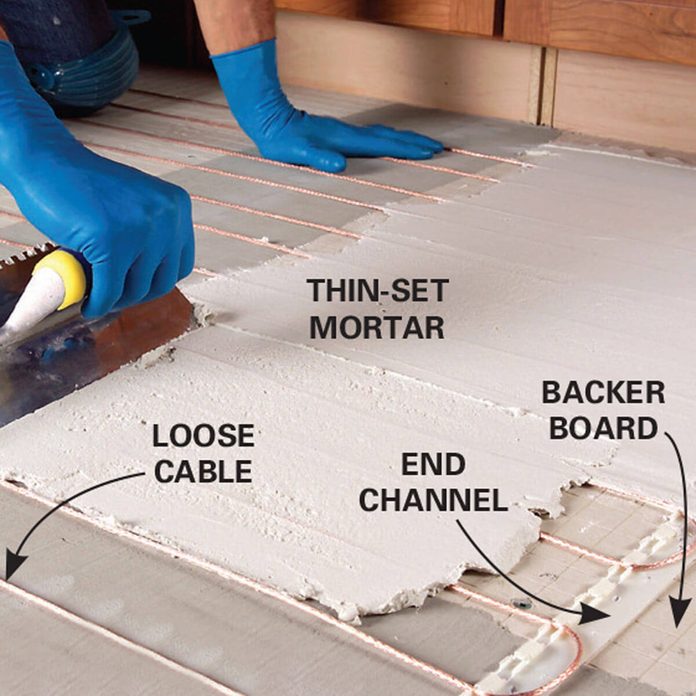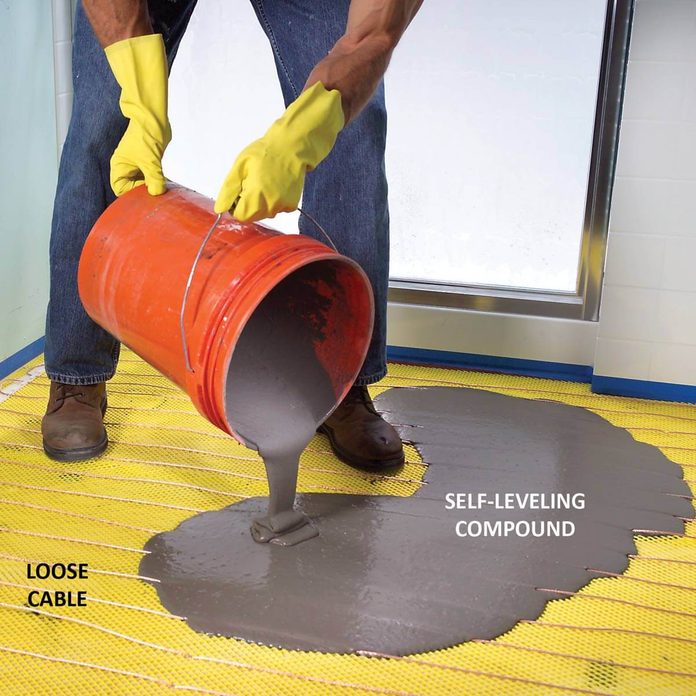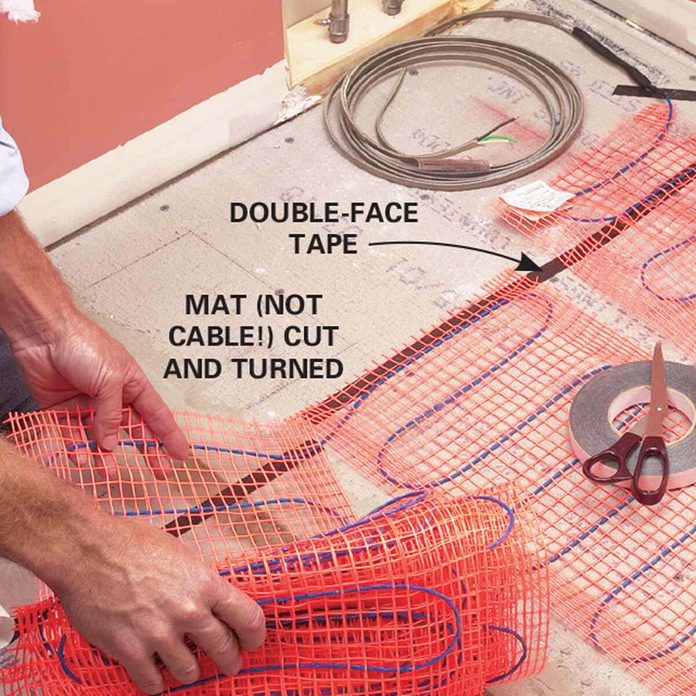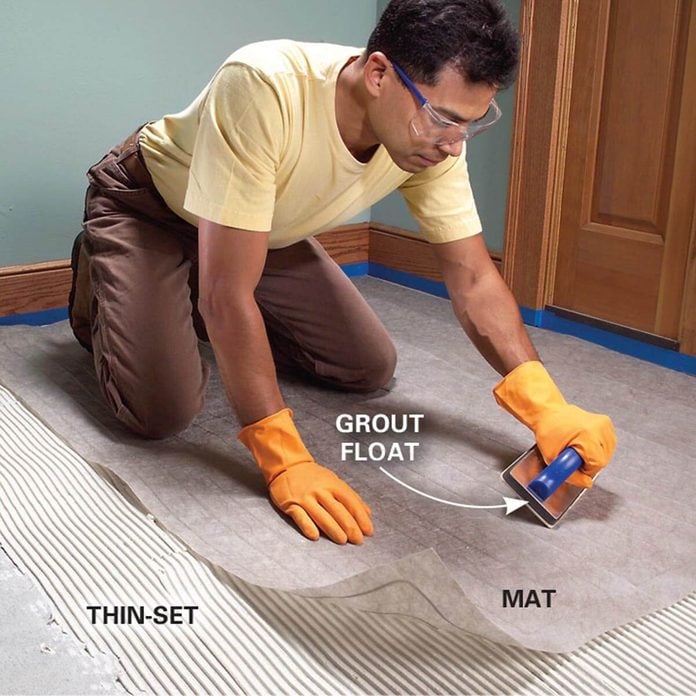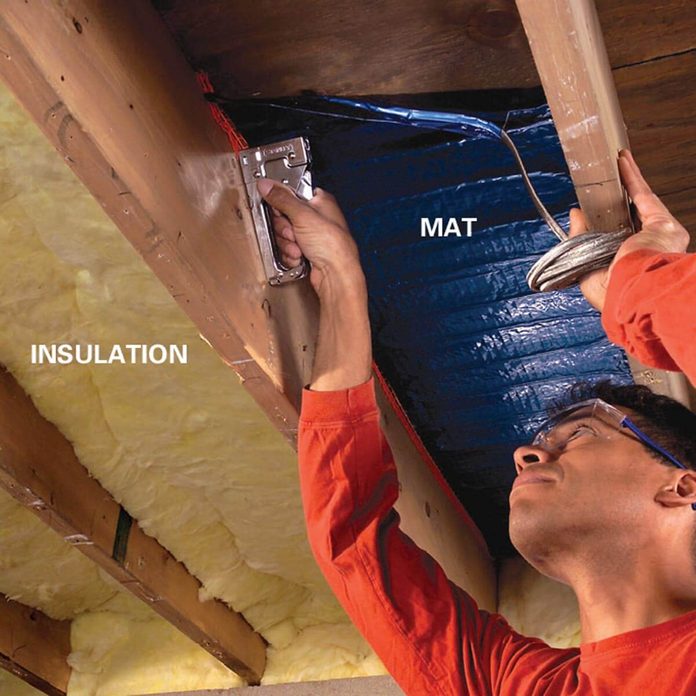3 Types of Electric Heated Floors
Updated: Sep. 02, 2021Any flooring material can cover a heated floor, but some work better than others.
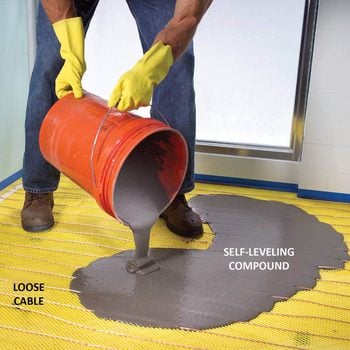
Floor Coverings & Electric Heated Floors
Ceramic and stone tile are the most common type of heated floor. Heat doesn’t harm them and they hold and conduct heat best. Solid wood floors can develop gaps if they dry and shrink when heated. If you opt for solid wood, leave the installation to an experienced pro who will test the moisture content of the wood to avoid shrinkage. Floating floors made from wood or plastic laminate don’t develop gaps because they’re not fastened directly to the subfloor. But you’ll have to limit the floor temperature. Flooring warranties often limit the temperature to 85 degrees F.
Vinyl floors have similar temperature restrictions, whether they’re sheet vinyl or tile. Carpet or rugs can go over a heated floor, but they act as insulators and reduce heat flow to your feet and to the room as a whole. If you choose electric heated flooring under hard flooring and plan to use an area rug, consider installing the cables only under the flooring that won’t be covered by the rug.
Types of Electric Heated Floors:
1. Loose Cable
For this type of electric heated flooring, the cable comes on a spool, just like any other wire. Loose cable is by far the cheapest way to heat a floor and it’s just as effective as the other systems. The drawback of loose cable is installation time; you have to position the cable in a serpentine pattern, fasten it with lots of hot glue or staples, and then “embed” it. Most loose cable systems include end channels that guide spacing (photo, below). You can place cables close together to make the floor heat up faster and reach a higher temperature or farther apart to use less cable. Manufacturers offer various cable lengths to suit the floor’s square footage. You can’t splice sections of cable together to serve a larger room or repair damaged cable (this is true of all electric systems). Fasten the cable every 6 in. so it can’t shift or float while you embed the cable.
Caution: Work carefully with your trowel. If you nick the cable, the entire system won’t work.
Thin-Set Technique
There are two ways to embed cable: You can install the cable over tile backer board and then cover it with “thinset,” the mortar adhesive used for ceramic tile (photo above). The thin-set shrinks as it cures, so you may have to add a second layer after the first hardens to level it out. But creating a perfectly flat, smooth surface with thin-set is difficult. You can make it smooth enough for ceramic tile or a floating floor but probably not smooth enough for vinyl flooring.
Self-Leveling Technique
For a faster, smoother surface, install the cable without backer board and pour on “self-leveling compound,” or SLC (photo, above). SLC is a cement-based powder that you mix with water and then pour over the cable. It becomes rock hard in a few hours. Reinforce the SLC with plastic lath; metal lath can cut the cable. You can then lay tile, carpet, vinyl or a floating floor directly over the SLC.
2. Mesh Mats
The cable comes already woven into a plastic net. The prepositioned cable installs quickly—in less than half the time for loose cable. You simply staple or hot glue the mesh to the floor. As with loose cable, you then embed the cable and mesh.
Mats are available in lots of different dimensions. You can cut the mesh into sections to cover your floor or fit around corners (photo above). But you can’t cut or splice the cable itself. Some manufacturers recommend combing thin-set directly over the mesh and setting tile all in one operation. But this is difficult. Most tile setters prefer to embed the mesh first with thin-set or SLC just as with loose wire. The mesh tends to “float” as you embed it, so fasten it to the floor every 6 in.— even if the instructions recommend less fastening. After embedding it, you can lay tile, carpet, vinyl or a floating floor.
3. Solid Mats
Solid mats are often the most expensive electric system, but they’re also the easiest to install. The cable is completely
enclosed in synthetic fabric, plastic sheeting or metal foil. The big advantage is that you don’t have to embed it as you do loose cable or mesh mats.
Under-Mat
With under tile versions, you simply smooth the mat onto a bed of thin-set (photo above). Then you spread more thin-set with a grout float over the mat. And after it hardens comb more thin-set over the mat to set ceramic or stone tile as you normally would.
Under Floating Floor Mat
The under a floating floor solid mat systems are even easier to install; you just roll out the mats, tape them together and you’re done (photo above). You can then lay a floating wood or laminate floor directly over the heated flooring.
Under-Floor Mat Technique
Mats are available in various dimensions, and you can combine mats of different sizes to cover your floor. Some mats are sized to fit between joists, so you can heat the floor from below as shown above—a big advantage if you don’t want to replace an existing floor. And you can staple mats between joists to heat the floor above. Then insulate the underside of the mat with R-13 or thicker fiberglass batts. However, don’t install electric heat under a subfloor unless the system is specifically intended for that method.

